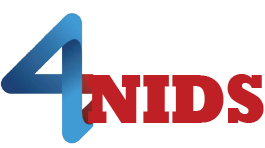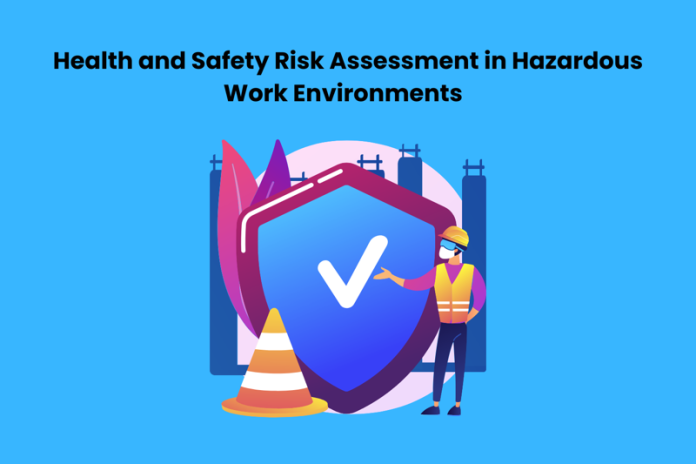The process of identifying possible risks and forecasting likely outcomes in a workplace is known as risk assessment. Something that can potentially harm someone or the environment is called a danger. Legal requirements may shield employees from dangers at work. One example of a law that has been put into effect in the UK is the Management of Health and Safety at Work Regulations 1999 (MHSWR). Potential threats to the health and safety of workers are recognised, evaluated, and managed under MHSWR.
Companies that operate in dangerous locations may reduce the number of accidents and deaths by doing risk assessments. Adhering to the requirements ensures worker safety and greatly lowers operating expenses. Risk assessments are more than just checking boxes; they can promote a culture of security and safety that benefits all parties. In this blog, we explore the Health and Safety Risk Assessment in Hazardous Work Environments and the significance of IOSH Training.
Table of Contents
- Hazard Identification and Risk Assessment
- How do you conduct a Health and Safety Risk Assessment?
- Assemble Your Team
- Identify the Hazards
- Assess the Risks
- Implement Control Measures
- Document and Communicate
- Monitor and Review
- Enhancing Health and Safety Management by IOSH Training
- Relevant IOSH Courses for Risk Assessment
- Benefits of IOSH Training for Individuals and Organizations
- Conclusion
Hazard Identification and Risk Assessment
Hazard identification and risk assessment are critical steps in effectively managing project-related risks, protecting public health and safety, and protecting the environment. Organisations may systematically identify possible hazards and proactively address them before they become incidents or accidents via data analysis, observation, and consultation.
Organisations may prioritise their response efforts depending on the amount of risk presented by evaluating the probability and implications of identified hazards via a comprehensive risk assessment. A safe and secure environment depends on implementing control mechanisms to reduce or manage these risks and the frequent monitoring and evaluation of the efficacy of these measures. Organisations may reduce the incident probability, safeguard assets, and guarantee the health and safety of stakeholders and workers by incorporating risk assessment and hazard identification into their operating processes.
How do you conduct a Health and Safety Risk Assessment?
When dealing with hazardous work environments, a proactive safety approach is required, and a health and safety risk assessment is a useful tool for this. Here’s a thorough how-to on carrying one out successfully:
Assemble Your Team
Assemble people who are well-versed in procedures, work environment, and risks. Supervisors, employees doing their jobs directly, safety advocates, and medical specialists might all fall under this category.
Identify the Hazards
Examine every facet of the work environment in detail, considering the duties, tools, supplies, and physical surroundings. Manufacturer instructions, safety data sheets, and prior incident reports may be used. Encourage employees to voice any issues they may have and to share their experiences.
Assess the Risks
Evaluate each recognised hazard’s possible danger by taking the following into account:
- Likelihood: What is the likelihood that the danger will cause injury to someone? (Infrequent, sporadic, or regular?)
- Severity: How terrible may the damage possibly be? (Slight harm, major harm, death?)
Use a risk matrix or similar tool to estimate the overall risk level (high, medium, low) based on the combination of likelihood and severity.
Implement Control Measures
Prioritise the elimination of hazards whenever possible. To reduce the danger, consider replacing, isolating, or putting technical controls in place if removal isn’t practical.
Supplement these controls with administrative controls such as safe work practices or personal protective equipment (PPE) if necessary. Make sure the controls you’ve selected are dependable and effective.
Document and Communicate
Record the risk assessment results, including the specific control measures chosen and the dangers found. State who is responsible for what when it comes to putting these measures into action and keeping them up to date.
Share the risk assessment findings with all relevant staff members, ensuring they know the dangers found and the controls in place.
Monitor and Review
Keep a regular eye on how well your implemented control mechanisms are working. As work procedures, tools, or environmental circumstances change, update the risk assessment accordingly.
Promote a reporting culture among employees so they can easily disclose new risks or issues. This promotes a culture of proactive risk management and ongoing improvement.
Enhancing Health and Safety Management by IOSH Training
The Institution of Occupational Safety and Health (IOSH) is a well-known professional body for health and safety practitioners, offering a range of training courses designed to enhance knowledge and skills in health and safety management. IOSH training is crucial for allowing individuals to identify, assess, and handle occupational hazards. Certain IOSH courses are particularly useful for risk assessments in hazardous work environments.
Relevant IOSH Courses for Risk Assessment
This training aims to provide managers and supervisors with a comprehensive understanding of their responsibilities for health and safety. Risk management experts will find it very relevant because it covers techniques for hazard identification, risk assessment, and control measures.
The theory and practical implementation of risk assessment are the main topics of this course. It allows learners to recognise risks, evaluate hazards, and successfully apply control measures. This training is very helpful for offices that have limited space. It discusses the dangers connected to cramped areas and offers pointers for exhaustive risk analyses in these demanding settings.
Benefits of IOSH Training for Individuals and Organizations
Here, we explore the benefits of IOSH Training for Individuals and Organizations:
- Participant capacity to identify, evaluate, and effectively manage risks is increased by IOSH training, which improves organisational risk management as a whole.
- By equipping workers with the knowledge and abilities to recognise and control hazards, IOSH training reduces the likelihood of mishaps and accidents.
- Businesses that spend money on health and safety training show that they care about the welfare of their stakeholders and workers.
- When workers feel safe, and their needs are addressed, they may be more productive, morale, and retention.
Conclusion
Rather than courage, meticulous planning and preventive measures are the secret to overcoming the challenges posed by hazardous work environments. A thorough health and safety risk assessment creates a strong barrier against the hidden threats in these dangerous environments, just as an expert architect painstakingly constructs a stronghold to survive any siege.
We turn these precarious environments into safe havens for people’s well-being through systematic risk identification and evaluation, efficient management methods, and promoting safety communication. When employees realise that their health and safety are the first considerations in all decisions, they may go with their work confidently.





